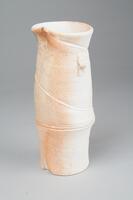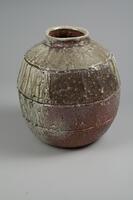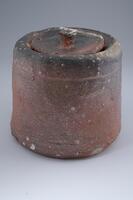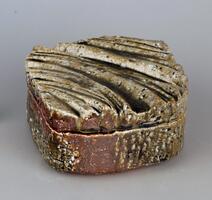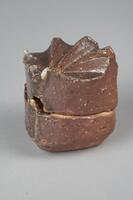24 UMMA Objects
24 UMMA Objects
![It has a flat base, globular body and straight neck with an everted rim. The color is dark grayish-blue.<br />
<br />
This is a blue-gray, high-fired stoneware cup with a handle. The mouth of the cup is slightly splayed and has a narrow, rounded rim. The body is widest at its center where a semicircular handle is attached vertically. The inner and outer surfaces show faint traces of rotation and water smoothing. The base is wide and flat and has no foot.
<p>[Korean Collection, University of Michigan Museum of Art (2017) p. 70]</p>
It has a flat base, globular body and straight neck with an everted rim. The color is dark grayish-blue.<br />
<br />
This is a blue-gray, high-fired stoneware cup with a handle. The mouth of the cup is slightly splayed and has a narrow, rounded rim. The body is widest at its center where a semicircular handle is attached vertically. The inner and outer surfaces show faint traces of rotation and water smoothing. The base is wide and flat and has no foot.
<p>[Korean Collection, University of Michigan Museum of Art (2017) p. 70]</p>](/media/W1siZiIsIjIwMjIvMDUvMjUvNGV2em85OThkdF9kZWZhdWx0LmpwZyJdLFsicCIsInRodW1iIiwiMjQweDIwMCJdXQ?sha=2d2a81114b915f5e)
Korean (Korean (culture or style))
Cup with small handle
400 – 599
Gift of Toshiko Ogita in memory of Tomoo Ogita
1987/1.310
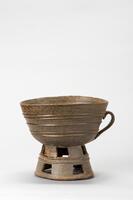
Korean (Korean (culture or style))
Pedestal Cup or bowl with handle, on cut-out pedestal foot
5th century
Gift of Bruce and Inta Hasenkamp and Museum purchase made possible by Elder and Mrs. Sang-Yong Nam
2004/1.180

Kōyama Kiyoko
Incense Container in the Shape of a Ginko Leaf
1995 – 2005
Gift of the artist
2010/1.216

Kōyama Kiyoko
Incense Container in the Shape of a Raccoon Dog
1995 – 2005
Gift of the artist
2010/1.217
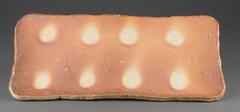
Takahashi Rakusai III (Japanese (culture or style))
Shigaraki ware plate
1955 – 1965
Museum Purchase
1963/2.76
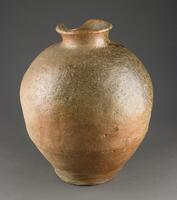
Shigaraki ware, Japan
Shigaraki ware storage jar
1567 – 1632
Museum purchase made possible by the Margaret Watson Parker Art Collection Fund
1986/1.161
Loading…
